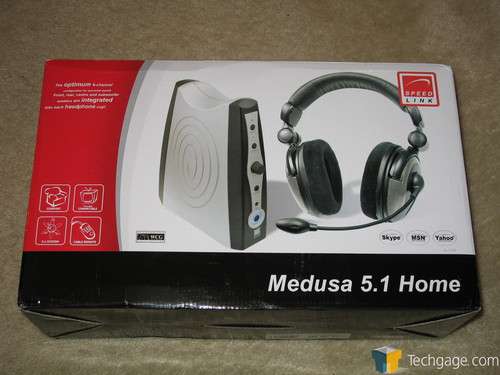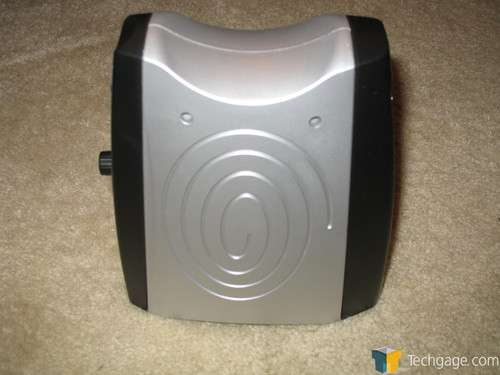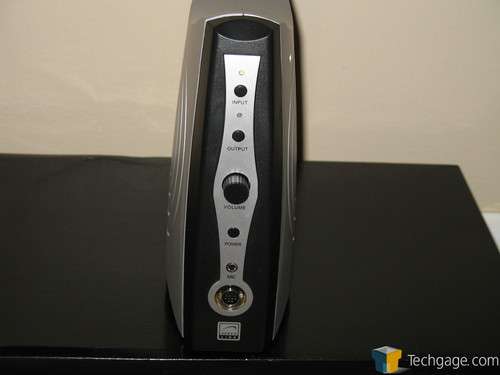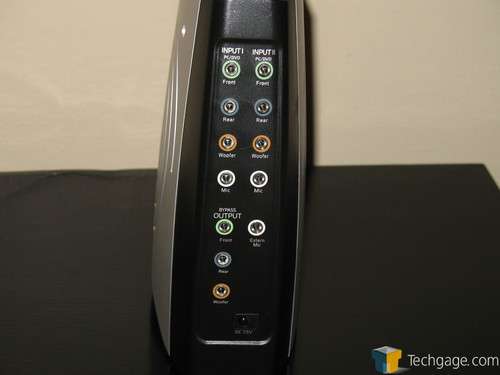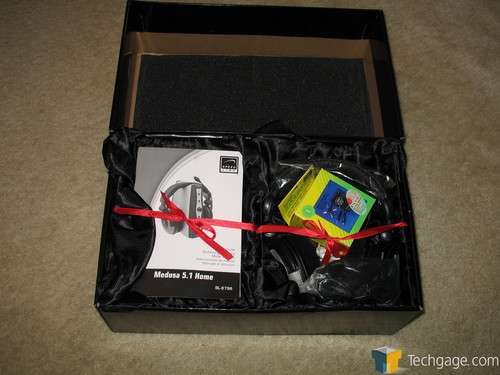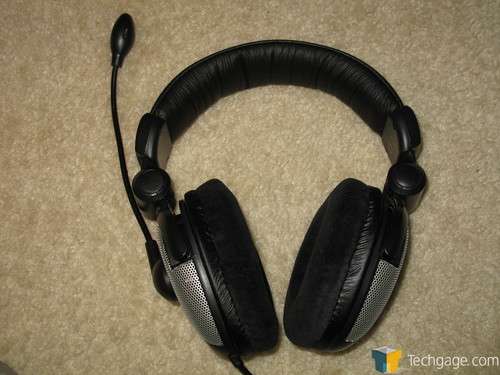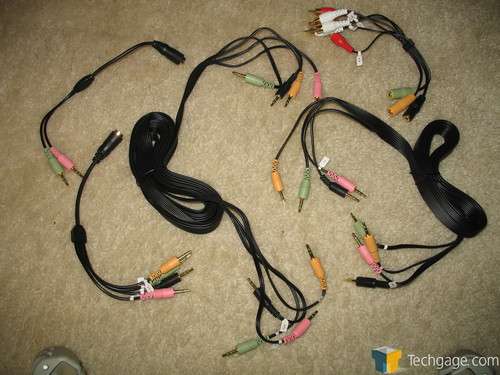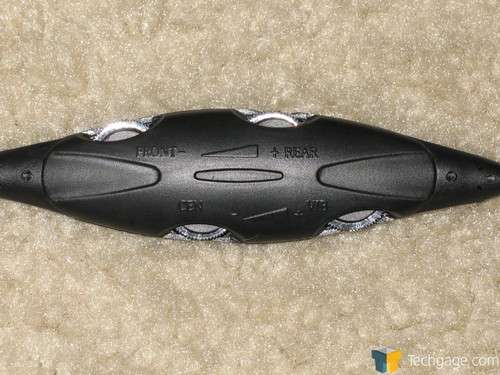- Qualcomm Launches Snapdragon 4 Gen 2 Mobile Platform
- AMD Launches Ryzen PRO 7000 Series Mobile & Desktop Platform
- Intel Launches Sleek Single-Slot Arc Pro A60 Workstation Graphics Card
- NVIDIA Announces Latest Ada Lovelace Additions: GeForce RTX 4060 Ti & RTX 4060
- Maxon Redshift With AMD Radeon GPU Rendering Support Now Available
Speedlink Medusa 5.1 and Sennheiser HD555
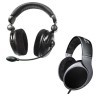
The choice between stereo and 5.1 headphones can be complicated, so we are taking a look at a popular sub-$150 offering of each type to see which one will come out on top. As we find out, the choice can make quite a big difference depending on what you will use your PC for most.
Page 1 – Introduction
|
|
Not too long ago, I started looking around for a new set of headphones. I’d been using a $40 pair from Radioshack (only markings say ‘Titanium’) and they started to come apart. I use headphones nearly all the time – mostly for gaming, but I usually have some music on while surfing the web, and sometimes I like to zone out with a WinAmp visualization. I’d been seeing various 5.1 headsets hitting the market for a while, so I figured I’d have a good look around the web and see what people thought of them.
What I found was that there is no shortage of opinions as to which headsets are good and which aren’t – I read numerous reviews and dozens of forum threads on a variety of headphones, and there wasn’t much that people wanted to agree upon. You can find glowing reviews of just about every headphone on the market, and everywhere I went I saw threads that went something like this…
Lamz0r n00b: I’m thinking of getting XXXX 5.1 headset. Any recommendations?
1337 Hax0r: Those are utter crap. Get the Sennheiser HD5XX. They sound WAY better. Btw, I have a recording studio in my house, and I just knifed you on CS:S.
…which didn’t make my decision any easier, since the HD5XX series are stereo.
Being a gamer, I was interested in the 5.1 surround sound headphones because being able to know where your enemies are off-screen often means the difference between getting flanked and scoring a head shot. Plus, I wanted to have personal experience with how they performed.
So after figuring out what my main wants were, I decided on the Medusa 5.1 (Home Edition) headset from Speedlink. This review might’ve been solely about the Medusas, but I didn’t want to parrot the dozens of other reviews I’d already read (and found to be not-so-helpful), so I decided that the best way to review a headset was to compare it to another headset, and since the Sennheiser HD series was recommended (rather fervently, by some) everywhere I went, what better yardstick could I have than the HD555’s?
What I’ll do is present an overview of each product individually, and then I’ll compare them directly when evaluating performance. Hopefully, this will provide some more definitive (if still subjective) information that will help you make the best buying decision.
Let’s get to it.
First off, I want to help dispel a little rumor that’s been going around for a number of years that the Medusa 5.1 headphones were banned from use by the Cyberathlete Professional League because they ‘gave competitors an unfair advantage’. I don’t know where the rumor started (although apparently Speedlink advertised it) but it is untrue.
The Medusa 5.1 Home Edition retails for $143.18 plus shipping at Medusa-usa.com. They also offer the ProGamer Edition for $117.44, which is USB powered and doesn’t have the external amp. I wasn’t able to find a cheaper price from any other online retailer. The Medusa 5.1 Home Edition’s features can be seem on the Medusa Website and are fairly self-explanatory, but I’d like to specifically point out the reasons why I went with the Home Edition instead of the Pro Gamer edition. It’s all about the external amplifier.
First is the issue of using USB to power the headphones – I read of numerous problems where distortion and/or noise was the result of using a USB port for power. In some cases, the headset manufacturer sent an external amplifier that plugged into the wall and the problem was solved. Rather than deal with the variability of PSUs and motherboards to provide clean power through USB ports, I wanted the external amp.
Secondly, the external amplifier also serves as a switch between the headphones and my speakers, so I don’t ever have to unplug any cables. It is also worth mentioning that the external amplifier has a master volume control in addition to the controls on the in-line remote.
You can see that Speedlink does a great job of packaging their product. Everything has it’s own box, and the ribbon is a nice touch.
Speedlink also ensures that you’ll have very few problems using their product regardless of where you are and what you’re trying to plug into. They’ve included AC adapters for both 115v and 230v, and adapter plugs to suit analogue stereo and component outputs. All of the cables are very long.
The in-line remote allows you to adjust the volume levels of four channels: front, rear, center, and bass. It’s a nice way to fine tune for certain scenarios, but I rarely change the settings. The remote itself seems a little flimsy, but I don’t think it would be easy to break by accident in any real scenario.
|
|
Support our efforts! With ad revenue at an all-time low for written websites, we're relying more than ever on reader support to help us continue putting so much effort into this type of content. You can support us by becoming a Patron, or by using our Amazon shopping affiliate links listed through our articles. Thanks for your support!




